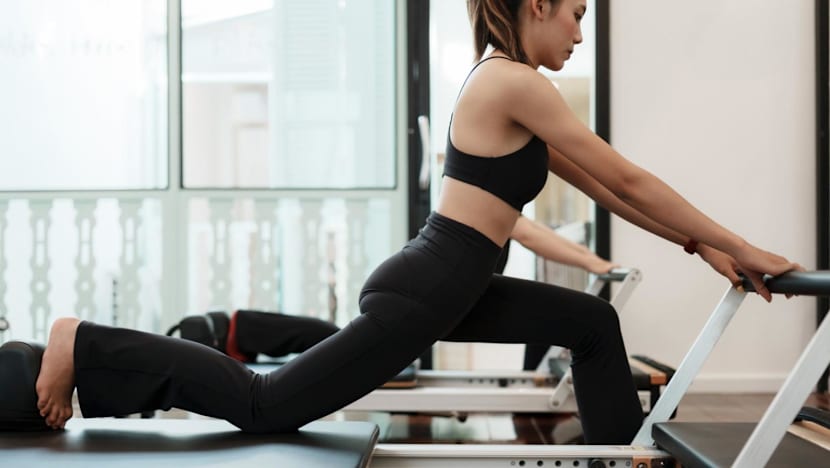Health
Can Pilates Truly Transform Your Body? Experts Weigh In

The claim that Pilates can create long and lean muscles has endured for decades, suggesting that this low-intensity workout can reshape physiques to resemble those of professional dancers. While there are many documented health benefits associated with Pilates, experts indicate that the idea of developing longer muscles is more marketing than reality. According to William Kraemer, a professor emeritus in the department of kinesiology at the University of Connecticut, “Your muscles can’t literally get longer,” as their length is genetically determined.
Instead, achieving a “toned” appearance typically indicates a reduction in body fat rather than muscle lengthening. This distinction highlights the need for a more nuanced understanding of what Pilates can and cannot do for the body.
The Origins and Marketing of Pilates
The Pilates method was introduced to New York City by Joseph Pilates in the 1930s, quickly gaining traction among professional ballet dancers. They found it beneficial for alleviating discomfort and rehabilitating injuries. Over time, many dancers transitioned into Pilates instructors, effectively becoming living testimonials for the workout’s promises. Shari Berkowitz, a Pilates teacher and educator in Peekskill, New York, notes that this development was a clever marketing strategy.
However, the early adopters of Pilates were already “long and lean” women, and the workout did not transform their physiques. The marketing narrative played into societal ideals that equate thinness with success while perpetuating fears that strength training, particularly heavy weight lifting, could lead to a “bulky” appearance.
Understanding Muscle Development Through Pilates
Regular Pilates practice can significantly enhance muscular endurance, but experts caution that it generally results in only modest gains in muscle size. Carrie Lamb, a Pilates studio owner and physical therapist in Golden, Colorado, explains this limitation. Traditional Pilates exercises involve low to moderate loads and are typically performed with fewer repetitions, making it less effective for muscle hypertrophy.
For individuals who have been inactive, initial improvements in muscle size may occur, but this approach is “not the most efficient” for building significant mass, as noted by Dr. Lamb. Most individuals do not unintentionally bulk up; achieving larger muscles typically requires strategic strength training and a tailored diet.
If muscle visibility, often associated with a “lean” look, is the goal, reducing body fat is essential. Dr. Cedric Bryant, an exercise physiologist and chief executive of the American Council on Exercise, emphasizes that visible muscles are obscured by subcutaneous fat for most people. He states, “Every single human has a set of washboard abs,” but they remain hidden under layers of fat.
Pilates can enhance posture by strengthening core and back muscles. Dr. Lamb highlights that the workout often emphasizes spinal extension, which counters the negative effects of prolonged sitting. This focus on flexibility and range of motion can also alleviate muscle tightness, leading to improved posture over time.
Nonetheless, if the objective is to increase muscle mass and overall strength, it is advisable to complement Pilates with progressive weight training. Anne Brady, a professor of kinesiology at the University of North Carolina at Greensboro, points out that both types of exercise offer distinct benefits that facilitate daily activities more effectively.
In summary, while Pilates has its merits, including enhancing endurance, flexibility, and posture, the notion of creating longer muscles is unfounded. For those seeking to build muscle mass, a combination of Pilates and weight training is recommended for optimal results.
-

 Lifestyle4 months ago
Lifestyle4 months agoHumanism Camp Engages 250 Youths in Summer Fest 2025
-

 Business5 months ago
Business5 months agoKenvue Dismisses CEO Thibaut Mongon as Strategic Review Advances
-

 Sports4 months ago
Sports4 months agoDe Minaur Triumphs at Washington Open After Thrilling Comeback
-

 Sports5 months ago
Sports5 months agoTupou and Daugunu Join First Nations Squad for Lions Clash
-

 Top Stories5 months ago
Top Stories5 months agoColombian Senator Miguel Uribe Shows Signs of Recovery After Attack
-

 World5 months ago
World5 months agoASEAN Gears Up for Historic Joint Meeting of Foreign and Economic Ministers
-

 Health4 months ago
Health4 months agoNew Study Challenges Assumptions About Aging and Inflammation
-

 Business5 months ago
Business5 months agoOil Prices Surge Following New EU Sanctions on Russia
-

 Entertainment4 months ago
Entertainment4 months agoDetaşe-Sabah Violin Ensemble Captivates at Gabala Music Festival
-

 Entertainment4 months ago
Entertainment4 months agoBaku Metro Extends Hours for Justin Timberlake Concert
-

 Top Stories5 months ago
Top Stories5 months agoRethinking Singapore’s F&B Regulations Amid Business Closures
-

 Business5 months ago
Business5 months agoU.S. House Approves Stablecoin Bill, Sends to Trump for Signature









